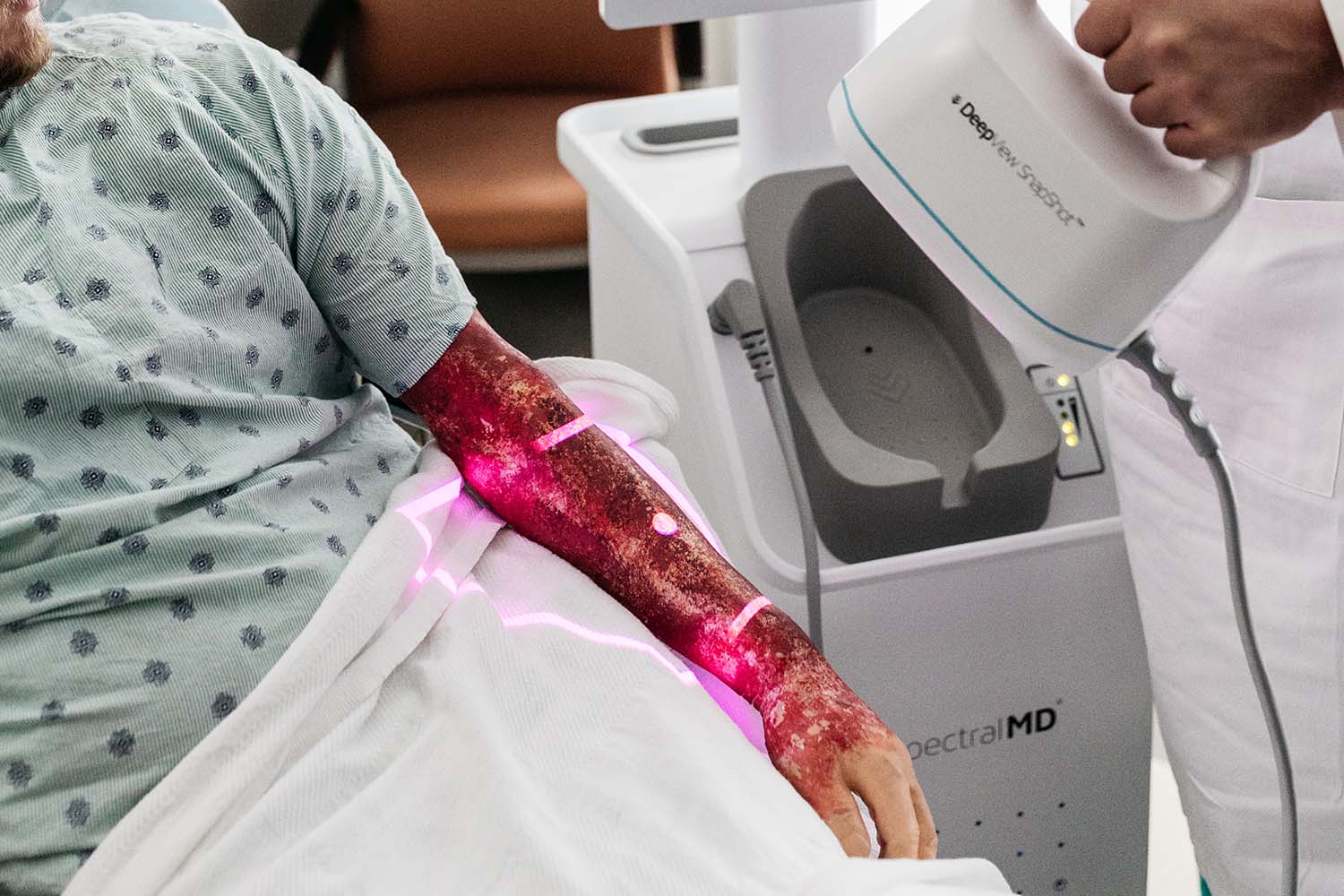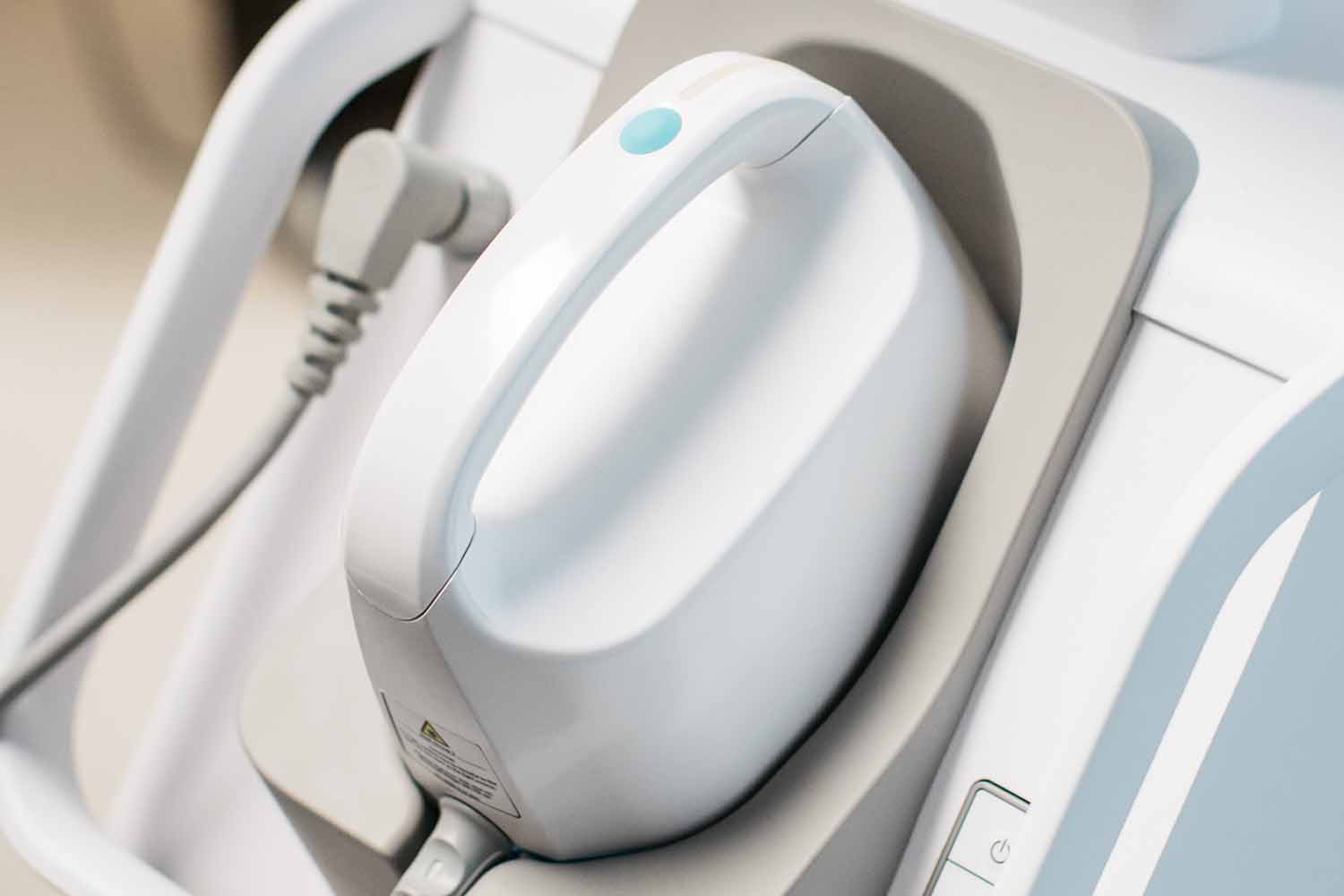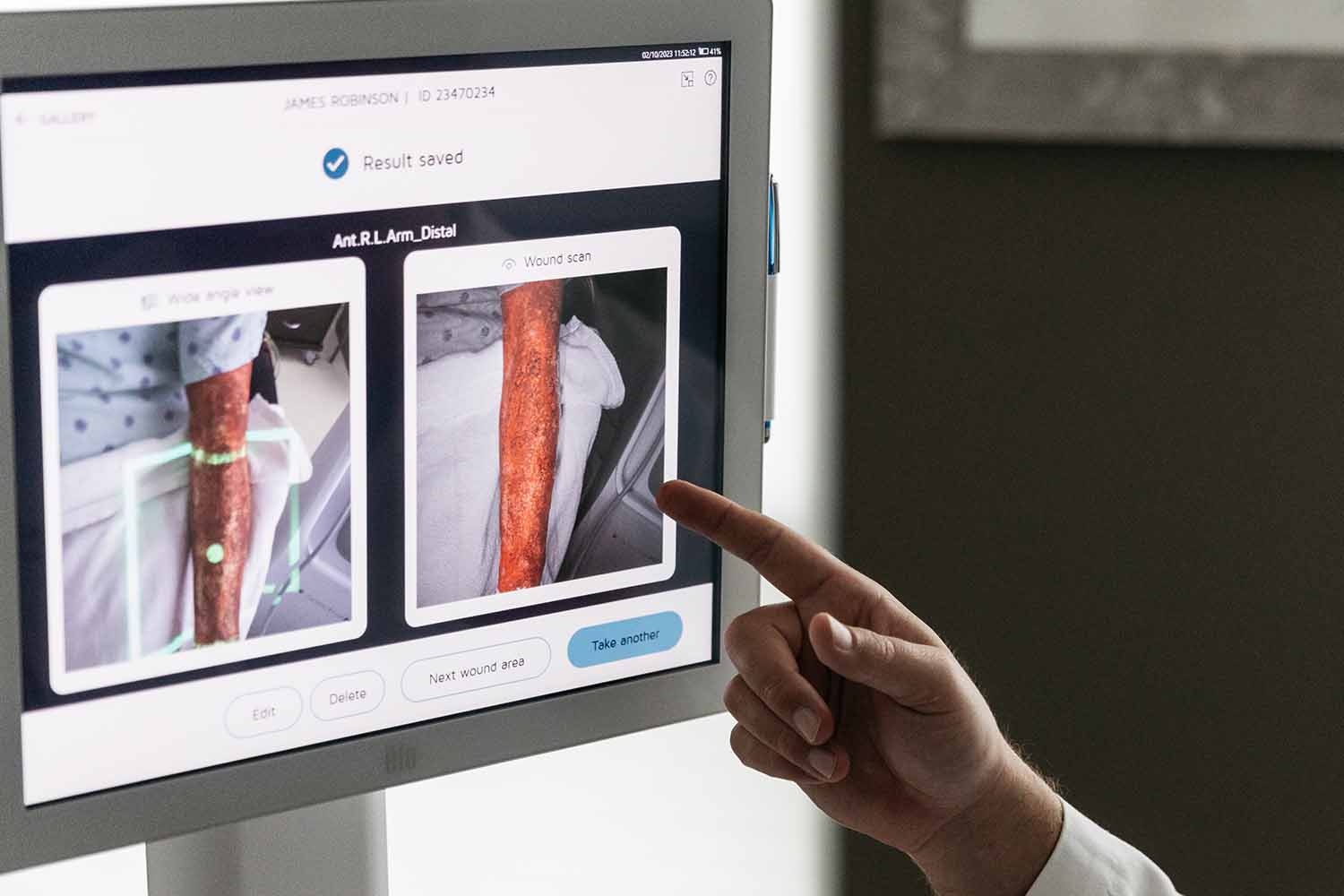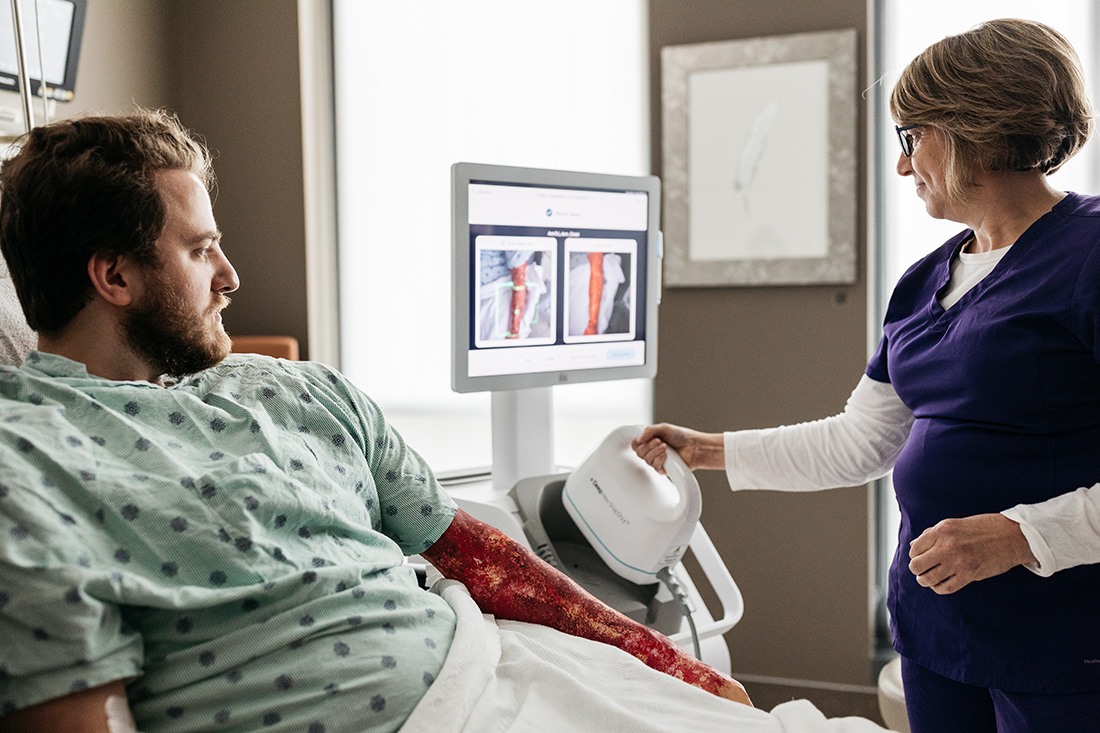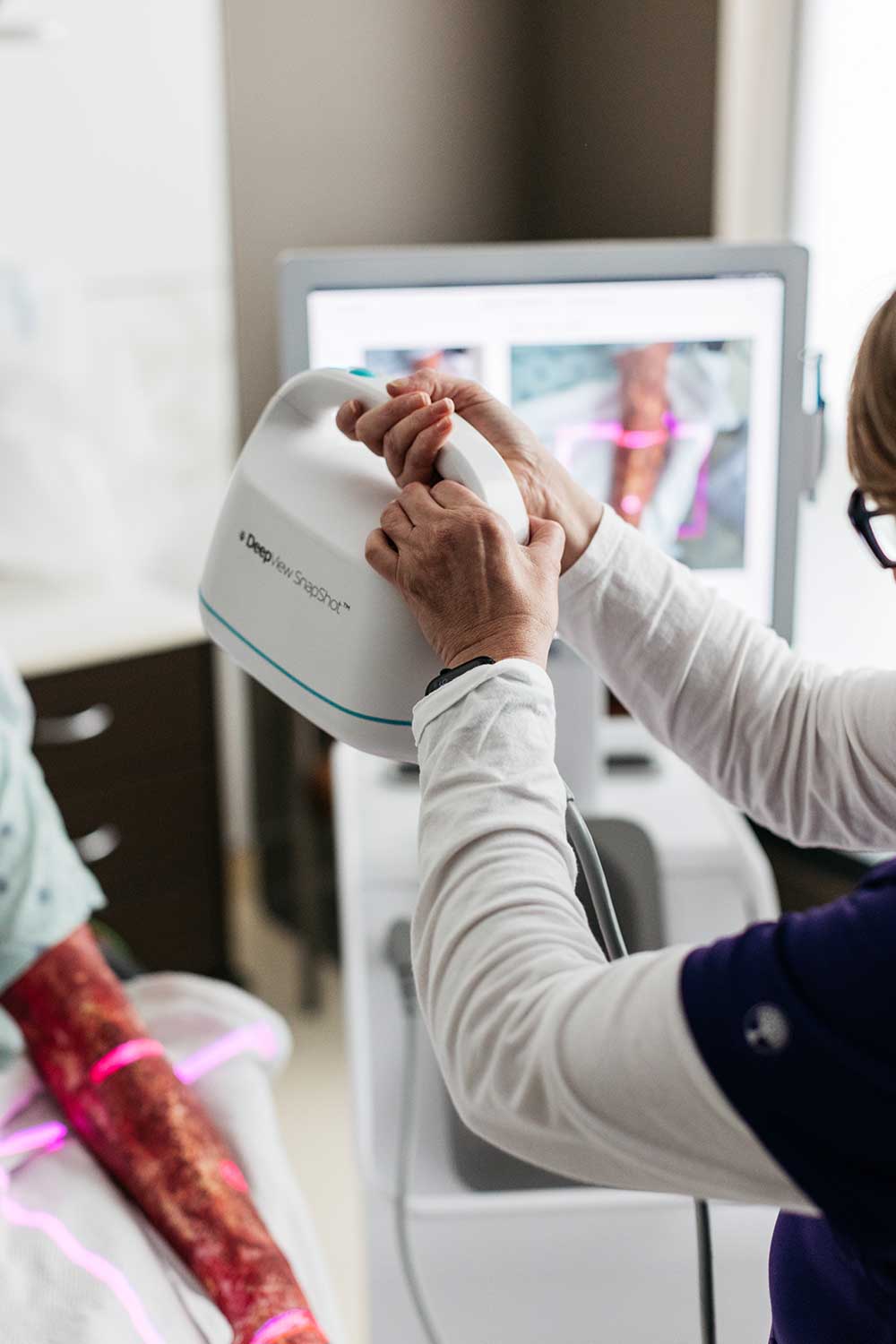In the ever-evolving landscape of healthcare, medical imaging serves as a cornerstone, providing invaluable insights into the human body’s intricacies. At the forefront of this domain lies the integration of Artificial Intelligence (AI), revolutionizing how medical images are analyzed, interpreted, and utilized in clinical practice. But what exactly is medical imaging, and how does AI enhance its capabilities? Medical imaging encompasses a diverse array of techniques and processes designed to visualize the body’s internal structures, aiding healthcare professionals in diagnosis, treatment planning, and patient monitoring. From X-rays and CT scans to MRI and ultrasound, each modality offers unique advantages, enabling clinicians to capture detailed images of bones, tissues, and organs with remarkable precision. However, the integration of AI introduces a new dimension to medical imaging, empowering clinicians with intelligent algorithms capable of automating tasks, identifying abnormalities, and providing personalized insights based on individual patient data.
The advent of AI in medical imaging heralds a new era of precision medicine, where treatments are tailored to the unique needs of each patient. By analyzing vast datasets encompassing imaging scans, genetic information, and clinical records, AI algorithms unlock the potential to predict treatment responses, optimize therapeutic regimens, and guide surgical interventions with unprecedented accuracy. Yet, amid the promise of AI-driven advancements lie a myriad of challenges and ethical considerations. From ensuring data privacy and security to fostering interpretability and trust in algorithmic outputs, healthcare providers grapple with the complexities of integrating AI into medical imaging workflows while upholding ethical principles and regulatory compliance. As the field continues to evolve, navigating these challenges and harnessing the transformative potential of AI in medical imaging remains paramount, paving the way for a future where personalized, efficient, and ethically sound healthcare is within reach.
Understanding Medical Imaging
What is Medical Imaging?
Medical imaging refers to the various techniques and processes used to create visual representations of the interior of the body for clinical analysis and medical intervention. These images are invaluable tools for healthcare professionals, providing vital information for diagnosis, treatment planning, and monitoring of various medical conditions.
Medical imaging devices employ a range of technologies, each offering unique advantages and applications. Common modalities include X-ray, computed tomography (CT), magnetic resonance imaging (MRI), ultrasound, and nuclear medicine imaging techniques like positron emission tomography (PET) and single-photon emission computed tomography (SPECT).
X-ray imaging involves passing electromagnetic radiation through the body to produce images of bones, tissues, and organs. CT scans use a series of X-ray images taken from different angles to create cross-sectional images of the body. MRI utilizes strong magnetic fields and radio waves to generate detailed images of soft tissues, organs, and structures within the body without ionizing radiation.
Ultrasound imaging employs high-frequency sound waves to produce real-time images of the body’s internal organs and structures. Nuclear medicine techniques involve administering small amounts of radioactive materials to the patient, which emit gamma rays that are detected by specialized cameras to create images of bodily functions and molecular processes.
Each imaging modality has its own strengths and limitations, making them suitable for different clinical scenarios. For instance, X-rays are commonly used for bone fractures and detecting abnormalities in the chest, while MRI is particularly useful for visualizing soft tissues such as the brain and muscles.
Medical imaging plays a crucial role in modern healthcare, enabling healthcare professionals to visualize and diagnose a wide range of medical conditions accurately. Additionally, it aids in guiding surgical procedures, monitoring treatment progress, and improving patient outcomes. As technology advances, medical imaging continues to evolve, providing increasingly detailed and comprehensive insights into the human body.
Importance of Medical Imaging Software
Medical imaging software serves as the backbone of modern healthcare, playing a pivotal role in diagnosis, treatment planning, and patient monitoring. These sophisticated tools empower healthcare professionals with the ability to analyze, interpret, and manage vast amounts of medical imaging data efficiently and accurately.
Firstly, medical imaging software assists in diagnosis by providing detailed visualizations of anatomical structures and pathological changes within the body. Whether it’s identifying fractures in X-rays, detecting tumors in MRI scans, or assessing blood flow patterns in ultrasound images, these software applications enable clinicians to make timely and accurate diagnoses, leading to better patient outcomes.
In treatment planning, medical imaging software facilitates precision medicine by allowing clinicians to tailor treatment strategies to individual patient needs. For example, surgeons use preoperative imaging data to plan surgical procedures with greater precision, minimizing risks and optimizing outcomes. Radiation oncologists utilize imaging software to delineate tumor boundaries and create customized treatment plans for cancer patients, maximizing therapeutic efficacy while minimizing damage to healthy tissues.
Furthermore, medical imaging software plays a crucial role in monitoring patient progress throughout the course of treatment. By comparing serial imaging studies over time, clinicians can assess treatment response, detect disease progression or recurrence, and adjust treatment strategies accordingly. This iterative process of monitoring ensures that patients receive timely interventions and appropriate care throughout their healthcare journey.
However, despite the numerous benefits of medical imaging software, several challenges and limitations persist in its interpretation and utilization. One significant challenge is the sheer volume of imaging data generated by modern imaging modalities, which can overwhelm clinicians and impede efficient analysis. Additionally, variations in image quality, artifacts, and anatomical complexities can complicate interpretation and lead to diagnostic errors.
Moreover, the integration of medical imaging software with electronic health records (EHRs) and other clinical systems remains a challenge, hindering seamless data exchange and interdisciplinary collaboration. Standardization of imaging protocols, terminology, and reporting formats also presents a hurdle in achieving interoperability and ensuring consistency across healthcare institutions.
Addressing these challenges requires ongoing advancements in medical imaging technology, including the development of artificial intelligence (AI) and machine learning algorithms to assist in image analysis, interpretation, and decision support. Furthermore, interdisciplinary collaboration among radiologists, clinicians, software developers, and regulatory agencies is essential to drive innovation, improve workflow efficiency, and enhance patient care in the field of medical imaging.

More about Deepview
Learn more about our DeepView® technology
Request a Demo
Looking to learn more about DeepView® technology, or eager to see it in action?
AI in Medical Imaging
What is Artificial Intelligence (AI)?
Artificial Intelligence (AI) represents a revolutionary advancement in the field of technology, particularly within the realm of medical imaging devices. At its core, AI refers to the development of computer systems capable of performing tasks that typically require human intelligence. These tasks can range from recognizing patterns in data to making decisions and predictions based on complex information.
In the context of medical imaging devices, AI plays a transformative role by enhancing the capabilities of traditional imaging technologies through intelligent algorithms and machine learning techniques. These algorithms are trained on vast amounts of imaging data, enabling them to recognize patterns, detect abnormalities, and assist healthcare professionals in diagnosing and treating various medical conditions.
For instance, AI algorithms can analyze radiographic images such as X-rays, CT scans, and MRI images with remarkable speed and accuracy, aiding radiologists in identifying abnormalities such as tumors, fractures, or other pathologies. By automating routine tasks and flagging potentially concerning findings, AI-powered medical imaging devices can expedite the diagnostic process, reduce interpretation errors, and improve patient outcomes.
Furthermore, AI holds the potential to revolutionize treatment planning and personalized medicine by analyzing imaging data to predict treatment responses, optimize treatment strategies, and tailor interventions to individual patient characteristics. For example, AI algorithms can analyze genetic and imaging data to identify biomarkers associated with treatment response in cancer patients, guiding oncologists in selecting the most effective therapies for each patient.
Despite its immense potential, integrating AI into medical imaging devices also presents challenges and considerations, including ensuring data privacy and security, validating the performance and reliability of AI algorithms, and addressing ethical and regulatory implications. However, with ongoing advancements in AI technology and interdisciplinary collaboration among researchers, clinicians, and industry stakeholders, AI is poised to continue driving innovation and transforming the landscape of medical imaging devices, ultimately improving patient care and outcomes.
Integration of AI in Medical Imaging
The integration of Artificial Intelligence (AI) in the medical imaging industry marks a significant leap forward in healthcare technology. Essentially, AI is being incorporated into medical imaging devices to enhance their capabilities, streamline workflows, and ultimately improve patient care.
One of the key areas where AI is making an impact is in image analysis. Traditional medical imaging devices generate vast amounts of data, which can be time-consuming for radiologists to analyze thoroughly. AI algorithms, however, excel at quickly and accurately interpreting images, allowing for more efficient diagnosis. For example, AI can assist in identifying abnormalities in X-rays, CT scans, MRI images, and other modalities, enabling healthcare providers to detect diseases such as cancer or fractures with greater accuracy and speed.
Moreover, AI-powered medical imaging devices can also aid in treatment planning. By analyzing imaging data alongside patient records and other relevant information, AI algorithms can help clinicians develop personalized treatment plans tailored to each patient’s unique needs. This could involve predicting treatment responses, optimizing treatment strategies, or even assisting in surgical planning by providing detailed anatomical insights.
Additionally, AI has the potential to revolutionize the field of image-guided interventions. By integrating real-time imaging data with AI algorithms, medical imaging devices can provide surgeons with enhanced guidance and assistance during procedures. For example, AI-powered navigation systems can help surgeons precisely locate tumors or other target areas, improving the accuracy and efficacy of minimally invasive surgeries.
However, the integration of AI in medical imaging is not without its challenges. Ensuring the accuracy, reliability, and safety of AI algorithms is paramount, as errors or biases in algorithmic predictions could have serious consequences for patient care. Furthermore, regulatory considerations and data privacy concerns must be carefully addressed to ensure compliance with healthcare regulations and protect patient confidentiality.
Despite these challenges, the integration of AI in medical imaging holds tremendous promise for the future of healthcare. By leveraging the power of AI to augment the capabilities of medical imaging devices, healthcare providers can deliver more accurate diagnoses, personalized treatment plans, and improved outcomes for patients. As AI technology continues to advance and evolve, its integration in the medical imaging industry is poised to drive further innovation and transformation in healthcare delivery.
Benefits of AI in Medical Imaging
Improved Accuracy and Efficiency for Healthcare
The integration of Artificial Intelligence (AI) in medical imaging brings about a notable improvement in accuracy and efficiency for healthcare. By harnessing the power of AI algorithms to analyze medical images, healthcare providers can achieve more precise and reliable diagnoses in a fraction of the time compared to traditional methods. This increased accuracy not only enhances patient care by facilitating earlier detection and treatment of diseases but also reduces the likelihood of missed or misinterpreted findings. Furthermore, AI-enabled medical imaging devices streamline workflow processes, allowing radiologists and clinicians to focus their expertise on cases that require their attention most urgently. Ultimately, the improved accuracy and efficiency afforded by AI in medical imaging contribute to better patient outcomes and a more effective healthcare system overall.
Personalized Medicine
In the realm of medical imaging, Artificial Intelligence (AI) plays a pivotal role in advancing the concept of personalized medicine. By leveraging AI algorithms to analyze vast amounts of patient data, including imaging scans, genetic information, and clinical records, healthcare providers can tailor treatment strategies to meet the specific needs of each individual patient. AI-driven analysis of medical imaging data enables the identification of subtle variations in disease presentation and treatment response, allowing for more precise and targeted interventions. Whether it’s predicting treatment outcomes, optimizing therapeutic regimens, or selecting the most suitable surgical approach, AI empowers clinicians to make informed decisions that align with the unique characteristics of each patient. Ultimately, the integration of AI in medical imaging facilitates the delivery of personalized care, leading to improved treatment outcomes and better quality of life for patients.
Cost-effectiveness of AI and Medical Imaging
The synergy between Artificial Intelligence (AI) and medical imaging presents a compelling case for cost-effectiveness in healthcare. By harnessing AI algorithms to analyze medical images and assist in diagnosis and treatment planning, healthcare providers can optimize resource utilization and streamline workflows, leading to significant cost savings. AI-driven automation reduces the need for manual image interpretation, saving valuable time for radiologists and clinicians while increasing throughput and efficiency. Moreover, AI-enabled medical imaging devices can help minimize unnecessary procedures, reduce diagnostic errors, and facilitate early detection of diseases, ultimately leading to lower healthcare costs associated with prolonged treatments and complications. Additionally, AI’s ability to predict treatment responses and tailor interventions to individual patient characteristics can optimize therapeutic outcomes, reducing the economic burden of ineffective or suboptimal treatments. In essence, the integration of AI in medical imaging not only enhances clinical outcomes but also delivers substantial cost benefits, making healthcare more accessible and sustainable.
Early Disease Detection
Early disease detection stands as a cornerstone of effective healthcare, and the integration of Artificial Intelligence (AI) in medical imaging substantially enhances this capability. By leveraging AI algorithms to analyze medical images with unparalleled speed and accuracy, healthcare providers can detect subtle signs of disease at its earliest stages. This proactive approach enables timely intervention and treatment, often before symptoms manifest or conditions progress to more advanced stages. Early disease detection not only improves patient outcomes by increasing the likelihood of successful treatment but also reduces healthcare costs associated with managing advanced diseases and complications. Ultimately, the marriage of AI and medical imaging empowers clinicians to identify and address health concerns swiftly, leading to better prognoses and enhanced quality of life for patients.

More about Deepview
Learn more about our DeepView® technology
Request a Demo
Looking to learn more about DeepView® technology, or eager to see it in action?
Challenges and Ethical Considerations
Data Privacy and Security
AI algorithms rely on vast amounts of patient data, including sensitive medical images and personal health information, so ensuring robust data privacy protections is paramount. Healthcare institutions must implement stringent security measures to safeguard patient data against unauthorized access, breaches, and cyberattacks. Additionally, concerns arise regarding the anonymization and de-identification of medical imaging data to protect patient privacy while still allowing for meaningful analysis. Ethical considerations also encompass the transparent and responsible use of AI algorithms, addressing biases in training data, and ensuring the equitable distribution of healthcare resources. Striking a balance between leveraging the potential benefits of AI in medical imaging and safeguarding patient privacy and autonomy poses a complex challenge, requiring careful consideration of ethical principles, regulatory compliance, and patient consent.
Interpretability and Trust
While AI algorithms can provide remarkable insights and assist in medical decision-making, their inner workings often remain opaque, raising concerns about the interpretability of their outputs. Clinicians may hesitate to rely on AI recommendations without a clear understanding of how they were generated. Moreover, ensuring that AI algorithms are unbiased, accurate, and reliable is crucial for building trust among healthcare professionals and patients. Ethical considerations also encompass the potential impact of AI-driven decisions on patient care and outcomes, as well as the responsibility to mitigate any unintended consequences or biases in algorithmic predictions. Striving for transparency, accountability, and ongoing validation of AI models is essential to foster trust and ensure ethical use of AI in medical imaging.
